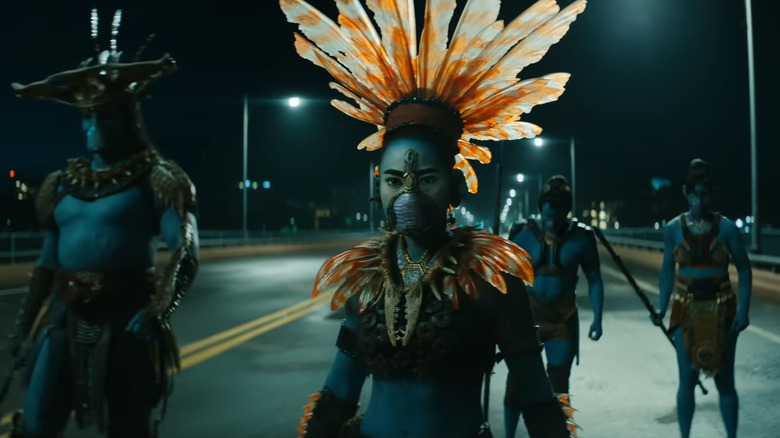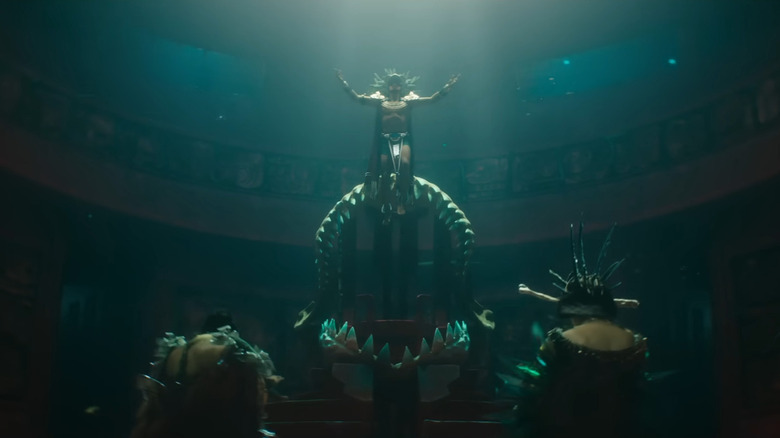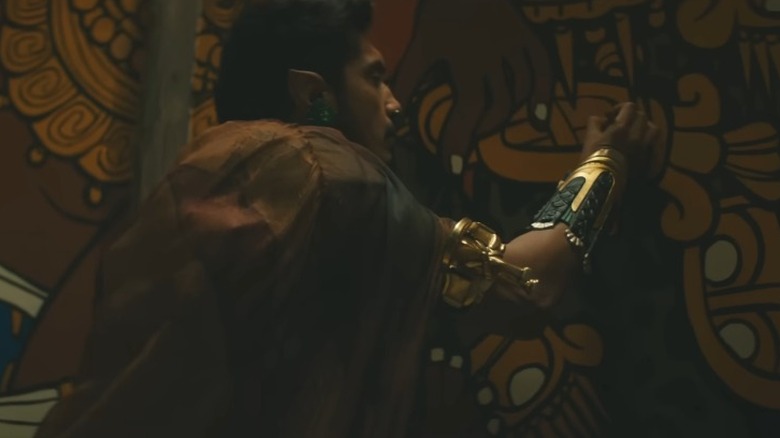Marvel Studios Created A 200-Page Bible Featuring Every Detail Of Talokan For Black Panther: Wakanda Forever [Exclusive]
This post contains spoilers for "Black Panther: Wakanda Forever."
Sometimes when we watch films for the first time, we don't notice every individual detail that the team puts in. Even if we don't see it all, having detailed histories of fictional societies like the Talokanil in "Black Panther: Wakanda Forever" gives the film a richer feeling while adding to the actors' performances and allowing deeper world-building.
In "Wakanda Forever," we meet the Talokanil people and their leader Namor (Tenoch Huerta Mejía) and visit the underwater city of Talokan. It's a beautiful place, like nothing we've seen before. Everything feels lived in, and as though it's been there for hundreds of years, from the murals on the wall that Namor paints and the bracelet he gives Shuri (Letitia Wright) to the giant jawbone throne.
This took tremendous planning on the part of the "Wakanda Forever" production team that included a 200-page bible detailing every aspect of Talokanil history and culture. /Film's own Ben Pearson recently spoke to Chris White, Weta's VFX supervisor for the film, about the information they had to work with to create Talokan and how it helped them to craft what we see on the big screen.
'200 pages full of their history'
The first glimpse we get of the full underwater city of Talokan is breathtaking, but that barely scratches the surface, leaving us to hope that we'll see more in the future. White explains in the interview that Talokan is much bigger than what we see and that the team created a full history of their people, even before they took to the ocean. "Talokan is a massive, massive city and it has multiple cities that are around it as well," White said. "[T]his was my first Marvel project, but as we first got on, there was a production bible of just Talokan, and it was 200 pages full of their history, their tools they built, their architecture, the influence, how they traveled through Central America.
"It's amazing how extensive that story was that they had created," he continued. "It may go by in like four minutes or so, but they've thought through so much, even as we first joined in. Just like everything, the culture — very extensive."
Until we can pause the film when it premieres on Disney+, we may not have seen every detail, but every little thing contributes to the overall feel of the film and the city of Talokan.
' We were able to offer up ideas and suggestions'
White was asked whether this 200-page Talokanil bible was restrictive because it meant that the team would have to check every detail they created against it. White said that wasn't the case.
"I don't think it's overwhelming. I actually appreciated it a lot because it was like they've really thought through those issues. I think it helps us, but they're also not limited by it, so we were able to offer up ideas and suggestions, and they were on board with it."
The fluidity of the creation and the ability to offer suggestions can only help when you're working with artists at the level Weta brings to the industry. They're responsible for films like Peter Jackson's "The Lord of the Rings" and "The Hobbit" trilogies, as well as "30 Days of Night," "Avatar," "Mad Max: Fury Road," "Blade Runner 2049," "Krampus," and "Dune," just to name a few.
"Black Panther: Wakanda Forever" is currently in theaters.


